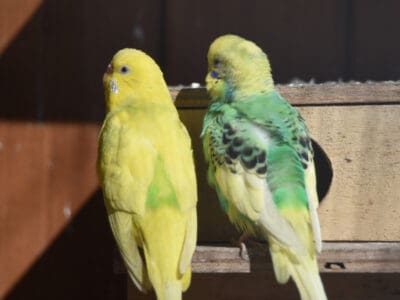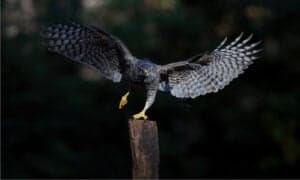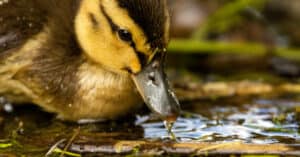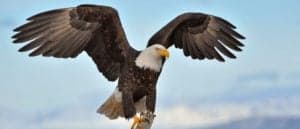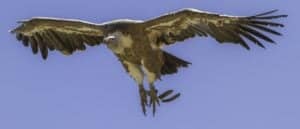Penguin Lifespan: How Long Do Penguins Live?
Penguins are cute waddlers, fast swimmers, and a favorite animal for many. There’s just so much to like about penguins. As adorable as these flightless birds are, they are also just as fascinating to learn about. From one-foot-tall blue penguins, the world’s tiniest species, to gentoo penguins, which can reach speeds of 22 miles per hour in the sea, there’s a penguin to love for everyone.
So if you’re curious to learn more about these fascinating birds, we’ve got you covered. We’ve got the rundown on the penguin lifespan, other interesting facts about these birds, and what preys on them in the wild.
The Rundown On Penguins
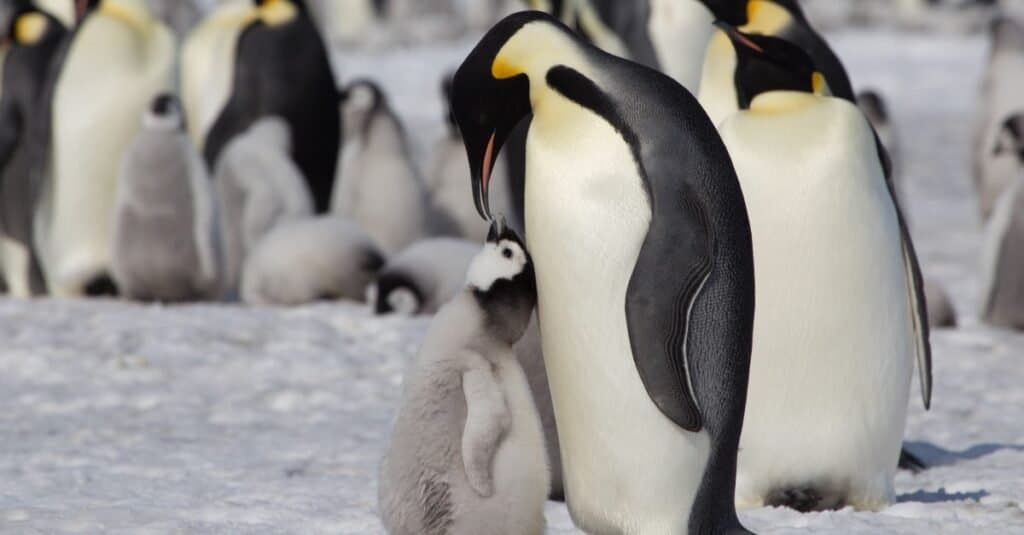
robert mcgillivray/Shutterstock.com
Penguins are flightless birds that live almost exclusively in the Southern Hemisphere. The only species found north of the Equator is the Galápagos penguin. To this day, scientists are still in debate over how many species of penguins actually exist. Estimates are anywhere between 17 to 20 different species.
Countries with large penguin populations include New Zealand, Australia, Chile, Argentina, and South Africa. Penguins consume a variety of fish and other sea life that they collect when diving. They can even consume seawater. They will spend almost half of their time in the water and half on land. The emperor penguin is the tallest of all penguin species, standing up at 120 cm (47 in). The second biggest penguin species is the king penguin. They have four layers of feathers to keep warm on the frigid subantarctic islands where they nest.
Let’s find out how long penguins live now that we know more about them.
How Long Do Penguins Live?
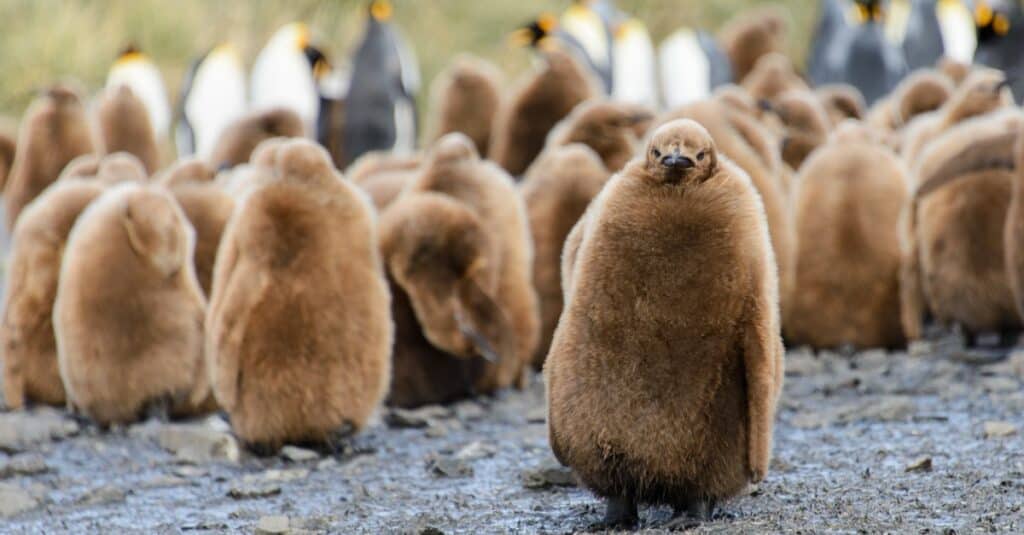
iStock.com/Alexey_Seafarer
The average penguin’s lifespan is 15 to 20 years in the wild. However, a penguin’s lifespan varies according to its species. Magellanic penguins have the longest life of any penguin on the planet, being able to live up to 30 years. Meanwhile, the tiny blue penguins have the shortest lifespan, only living up to 6 years. In comparison, penguins in captivity have a lifespan of about 20 to 34 years.
The world’s oldest penguin may be seen in Birdland, a wildlife park in Gloucestershire, England. Missy, a king penguin, is said to be over 40 years old.
Researchers published in Ecology and Evolution began studying the particularly long lives of Magellanic penguins (Spheniscus magellanicus). They looked at telomere lengths in adult penguins to see if they shortened with age and increased reproductive efforts. Typically, as we age, telomere length decreases. This leads to a variety of issues that eventually compromises an individual’s health and longevity.
However, it was found that the telomeres of Magellanic penguins were of similar length for adults aged 5–24 years of age, which contrasts with the classical theory that telomeres shorten with age. These findings suggest that the maintenance of telomeres can contribute to prolonged lifespan even with increased levels of basal corticosterone and reproductive effort.
Pretty cool find!
The Average Penguin Life Cycle
Similar to other birds, penguins have five life stages. The five life stages of a penguin are egg, hatchling, chick, juvenile, and adult.
Egg
For the breeding season, penguins establish monogamous partnerships. The majority of penguins lay two eggs in a clutch, but the two biggest species, the emperor and king penguins, lay only one. Eggs are incubated for around 38-42 days before they hatch.
Hatchlings
Hatchlings are penguins that have just hatched, whereas chicks are slightly older and bigger. The hatchlings are raised by their parents for up to three months after they hatch. They shed their down feathers at this phase and can now swim and forage while the parent continues to provide nourishment.
Juveniles
Juveniles are young adults that are grey/silver in color depending on the species. They already have certain abilities, but they still learn how to operate on their own. It can take up to 13 months for juveniles to grow waterproof feathers and the capacity to seek food on their own.
Adulthood
Adult plumage develops after roughly a year. The colors and patterns of chicks distinguish them from adults in every species. Chicks that have replaced their juvenile down with waterproof feathers are considered independent adults.
Factors That Impact The Penguin Lifespan
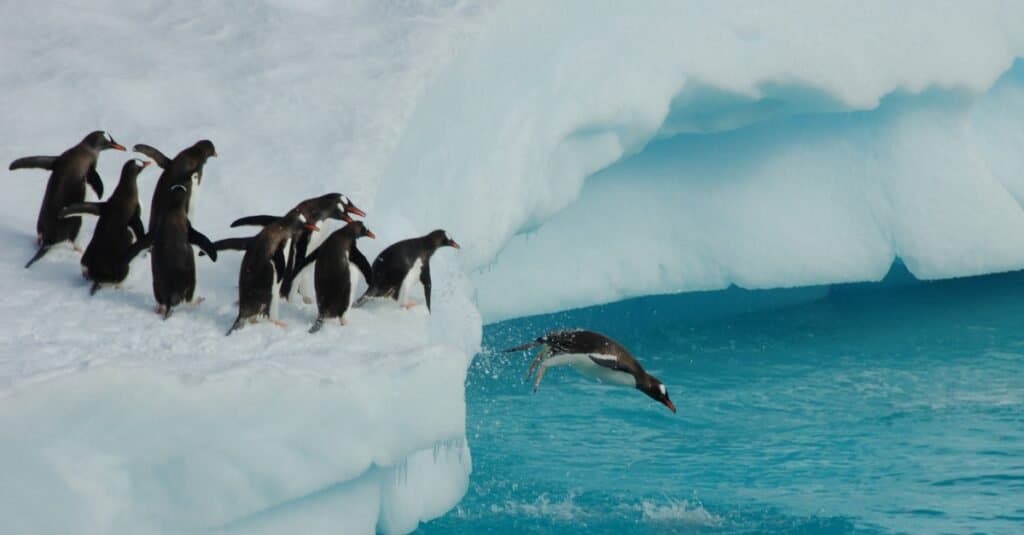
Ronsmith/Shutterstock.com
There are many factors that come into play when it comes to the lifespan of penguins. In the wild, they are susceptible to many external issues that are beyond their control.
Some of these include:
- Predators: Penguins may be eaten by leopard seals, fur seals, sea lions, sharks, or killer whales when swimming. On the shore, foxes, snakes, and introduced predators such as feral dogs, cats, and stoats (members of the weasel family) feed on penguin eggs and chicks, especially yellow-eyed and Galapagos penguins. Predatory birds such as antarctic skuas, sheathbills, and giant petrels prey on Antarctic and subantarctic eggs and chicks.
- Humans: Overfishing has become a major for many penguin species. For example, the overfishing of anchovetta (a tiny fish), the Humboldt penguin’s major food source, has contributed to a number of penguin losses. Krill is now also harvested commercially, mostly for human nutritional supplements and farmed feed. Expansion of the Southern Ocean krill harvest may lower krill numbers and create nutritional stress on krill-eating penguins such as Adélies and chinstraps.
- Climate change: Penguins rely on sea ice for breeding and foraging grounds. Many of the animals that penguins hunt find refuge and food on the sea ice. Warmer temperatures from climate change cause thinner sea ice in Pt. Géologie, the northernmost emperor penguin lair. Chicks are pushed into the sea before they can live on their own. This colony has declined from over 6,000 breeding pairs in the 1970s to approximately 3,000 breeding pairs in 1998.
More from A-Z Animals
Penguins are cute waddlers, fast swimmers, and a favorite animal for many. There’s just so much to like about penguins. As adorable as these flightless birds are, they are also just as fascinating to learn about. From one-foot-tall blue penguins, the world’s tiniest species, to gentoo penguins, which can reach speeds of 22 miles per hour in the sea, there’s a penguin to love for everyone.
So if you’re curious to learn more about these fascinating birds, we’ve got you covered. We’ve got the rundown on the penguin lifespan, other interesting facts about these birds, and what preys on them in the wild.
The Rundown On Penguins

robert mcgillivray/Shutterstock.com
Penguins are flightless birds that live almost exclusively in the Southern Hemisphere. The only species found north of the Equator is the Galápagos penguin. To this day, scientists are still in debate over how many species of penguins actually exist. Estimates are anywhere between 17 to 20 different species.
Countries with large penguin populations include New Zealand, Australia, Chile, Argentina, and South Africa. Penguins consume a variety of fish and other sea life that they collect when diving. They can even consume seawater. They will spend almost half of their time in the water and half on land. The emperor penguin is the tallest of all penguin species, standing up at 120 cm (47 in). The second biggest penguin species is the king penguin. They have four layers of feathers to keep warm on the frigid subantarctic islands where they nest.
Let’s find out how long penguins live now that we know more about them.
How Long Do Penguins Live?

iStock.com/Alexey_Seafarer
The average penguin’s lifespan is 15 to 20 years in the wild. However, a penguin’s lifespan varies according to its species. Magellanic penguins have the longest life of any penguin on the planet, being able to live up to 30 years. Meanwhile, the tiny blue penguins have the shortest lifespan, only living up to 6 years. In comparison, penguins in captivity have a lifespan of about 20 to 34 years.
The world’s oldest penguin may be seen in Birdland, a wildlife park in Gloucestershire, England. Missy, a king penguin, is said to be over 40 years old.
Researchers published in Ecology and Evolution began studying the particularly long lives of Magellanic penguins (Spheniscus magellanicus). They looked at telomere lengths in adult penguins to see if they shortened with age and increased reproductive efforts. Typically, as we age, telomere length decreases. This leads to a variety of issues that eventually compromises an individual’s health and longevity.
However, it was found that the telomeres of Magellanic penguins were of similar length for adults aged 5–24 years of age, which contrasts with the classical theory that telomeres shorten with age. These findings suggest that the maintenance of telomeres can contribute to prolonged lifespan even with increased levels of basal corticosterone and reproductive effort.
Pretty cool find!
The Average Penguin Life Cycle
Similar to other birds, penguins have five life stages. The five life stages of a penguin are egg, hatchling, chick, juvenile, and adult.
Egg
For the breeding season, penguins establish monogamous partnerships. The majority of penguins lay two eggs in a clutch, but the two biggest species, the emperor and king penguins, lay only one. Eggs are incubated for around 38-42 days before they hatch.
Hatchlings
Hatchlings are penguins that have just hatched, whereas chicks are slightly older and bigger. The hatchlings are raised by their parents for up to three months after they hatch. They shed their down feathers at this phase and can now swim and forage while the parent continues to provide nourishment.
Juveniles
Juveniles are young adults that are grey/silver in color depending on the species. They already have certain abilities, but they still learn how to operate on their own. It can take up to 13 months for juveniles to grow waterproof feathers and the capacity to seek food on their own.
Adulthood
Adult plumage develops after roughly a year. The colors and patterns of chicks distinguish them from adults in every species. Chicks that have replaced their juvenile down with waterproof feathers are considered independent adults.
Factors That Impact The Penguin Lifespan

Ronsmith/Shutterstock.com
There are many factors that come into play when it comes to the lifespan of penguins. In the wild, they are susceptible to many external issues that are beyond their control.
Some of these include:
- Predators: Penguins may be eaten by leopard seals, fur seals, sea lions, sharks, or killer whales when swimming. On the shore, foxes, snakes, and introduced predators such as feral dogs, cats, and stoats (members of the weasel family) feed on penguin eggs and chicks, especially yellow-eyed and Galapagos penguins. Predatory birds such as antarctic skuas, sheathbills, and giant petrels prey on Antarctic and subantarctic eggs and chicks.
- Humans: Overfishing has become a major for many penguin species. For example, the overfishing of anchovetta (a tiny fish), the Humboldt penguin’s major food source, has contributed to a number of penguin losses. Krill is now also harvested commercially, mostly for human nutritional supplements and farmed feed. Expansion of the Southern Ocean krill harvest may lower krill numbers and create nutritional stress on krill-eating penguins such as Adélies and chinstraps.
- Climate change: Penguins rely on sea ice for breeding and foraging grounds. Many of the animals that penguins hunt find refuge and food on the sea ice. Warmer temperatures from climate change cause thinner sea ice in Pt. Géologie, the northernmost emperor penguin lair. Chicks are pushed into the sea before they can live on their own. This colony has declined from over 6,000 breeding pairs in the 1970s to approximately 3,000 breeding pairs in 1998.

